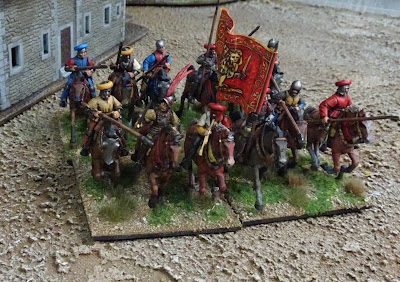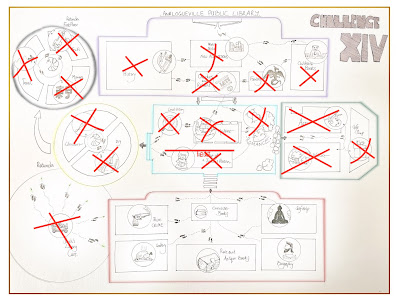Of all the ranges of figures I have ever painted, the Middle Imperial Romans by A&A Miniatures are certainly in my top 5. They aren't everybody's cup of conditum, but painting them gives me great joy.
Back in the 2020 lockdown, I spent many a lonely night painting a third-century Roman army from A&A. Recently, it has been an absolute joy to get it out on the table in several terrific games of To the Strongest! As a result, I have inevitably tinkered with the army, adding the Gripping Beast cataphracts from my last post. Then John from The War Library happened to mention that he had some A&A Romans in stock, which was really like him shooting fish in a barrel. Consequently, I added a unit of armoured archers, which I hadn't quite finished in time for last week's entry. And I may have bought a bunch of other Roman legionaries, cavalry and auxiliaries.
And then, the perfect storm of work anxiety, having lovely A&A Miniatures in my hand and the enjoyment of playing To The Strongest! led to me buying a Palmyran army from A&A. And here we are.
In a sort of homage to the viral days of 2020, I have been quite ill with Covid over the past week. I have been sleeping A LOT, but when I have had the energy, I have made a nice start to the Palmyran army of King Odaenathus. The history and culture of Palmyra is so fascinating. In the decade after the defeat of the Roman emperor Valerian in 260, Palmyra became a major power between Rome and Sassanian Persia, influenced by both but utterly distinct. Ostensibly governing the east on behalf of Rome, King Odaenathus and then his widow Zenobia ended up ruling the region from eastern Turkey through Syria and all the way to Egypt, until Aurelian's 'reconquest?' of Palmyran territory culminated with the destruction of Palmyra in AD273.
For a period in the late 260s Odaenathus commanded Roman troops, so I have started my army with a vexillation of the Legio IIII Scythica and some cavalry. For playing To the Strongest, I've added a hero figure (the clubman) and a casualty marker. I've imagined that the Romans are under the influence of the Palmyrenes, and quite likely largely recruited from them, so have given them (hand painted) shields showing the Palmyrene moon god Aglibol, who is depicted in some surviving reliefs with a crescent and rays.
In something of a points bomb for me, this week's output comes to 39 foot figures (two of them are prone if you want to halve the points) and 12 cavalry.
From Millsy: Alan, these are absolutely stunning! If ever the saying "Start as you mean to go on" is applicable this is it. I recall you talking about these shields on a paint and chat and have been keen to see them ever since, and clearly the wait was worth it. Utterly gorgeous mate and worth an extra 10 bonus points for me. More please!



















































